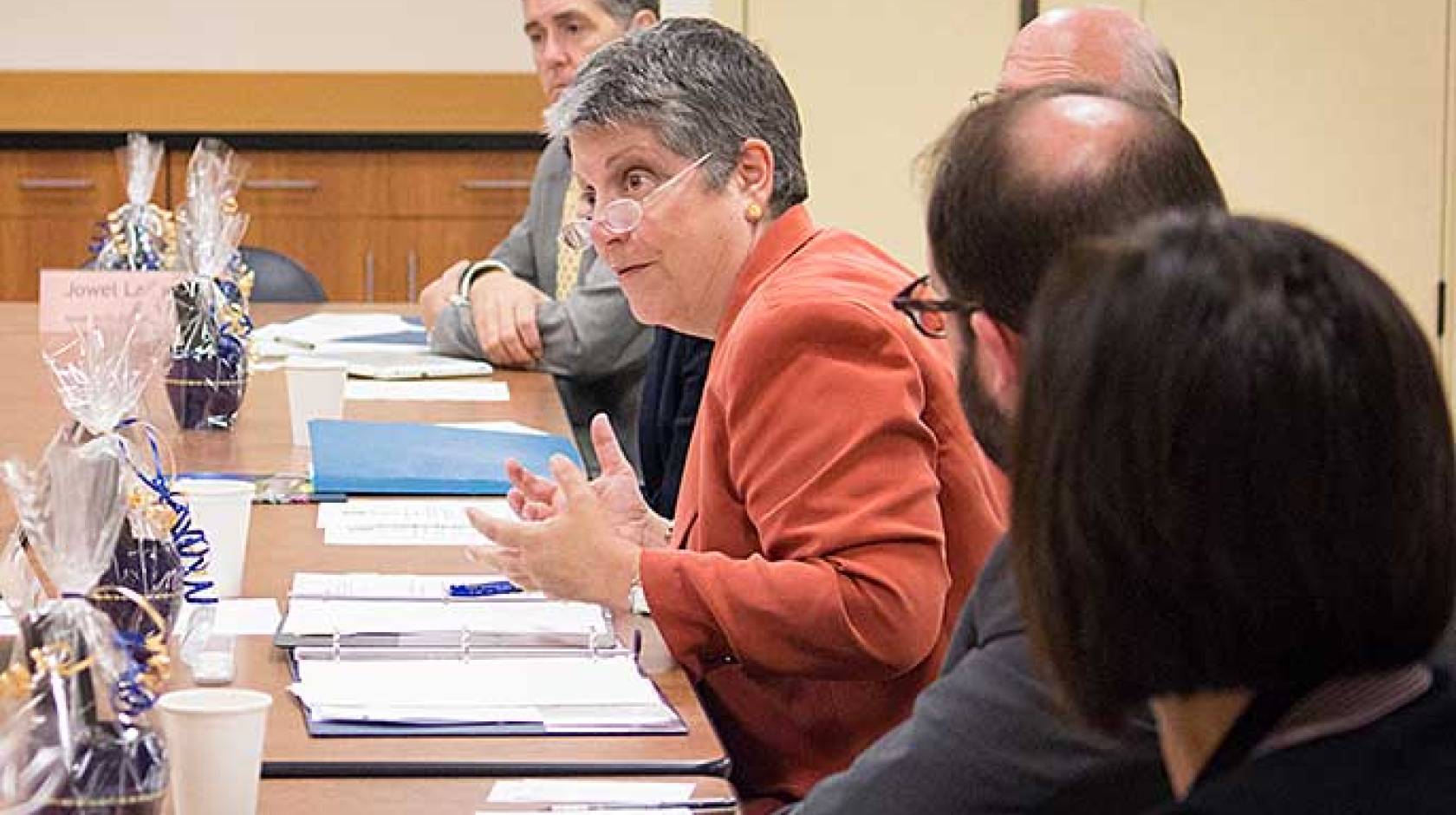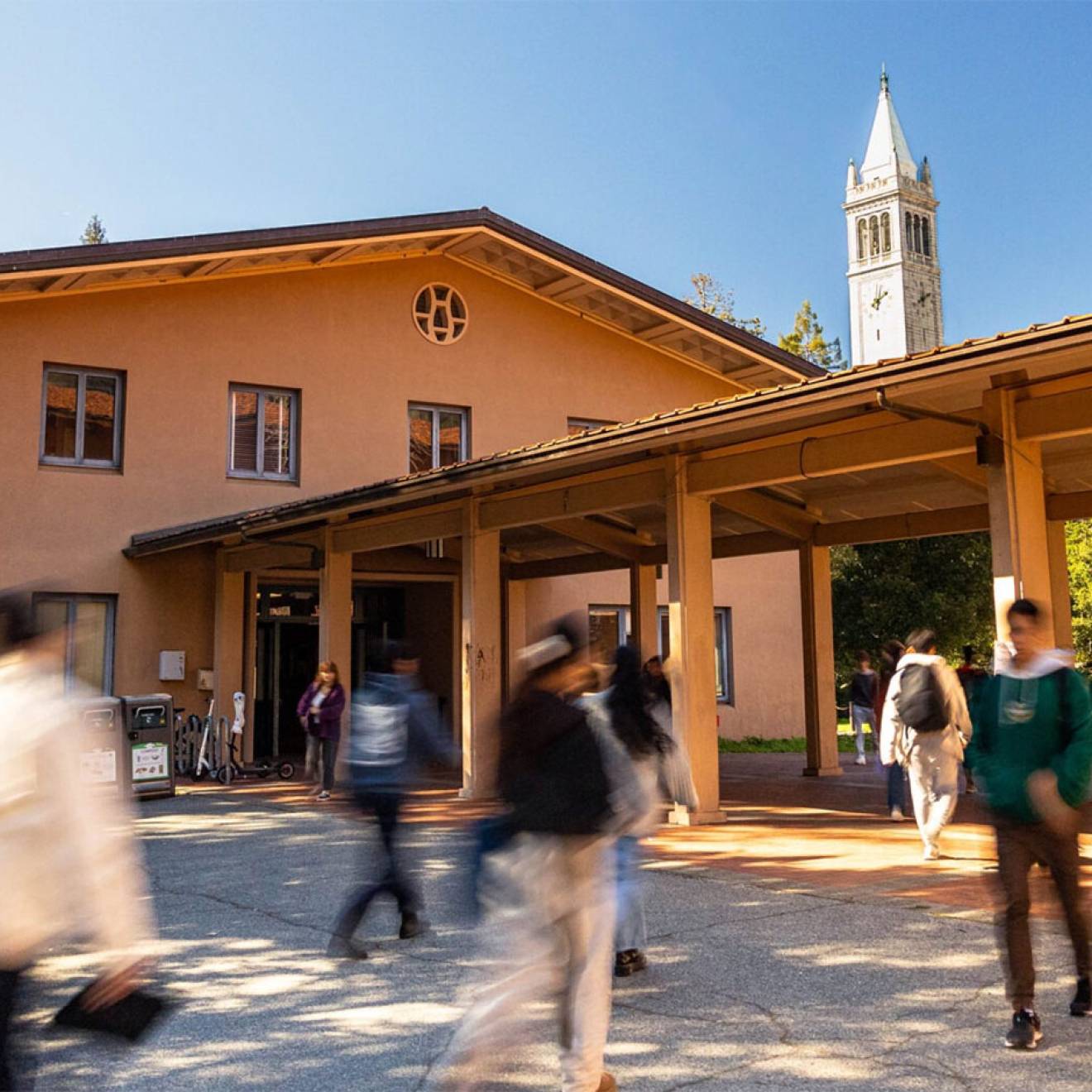Nicole Freeling, UC Newsroom

University of California President Janet Napolitano met in Merced today (Sept. 4) with leaders of Central Valley-area community colleges to discuss ways to encourage more of their students to transfer to UC campuses.
The discussion is part of a series of conversations Napolitano plans to have with community college leaders around the state about how UC and the California Community College system can work together to strengthen the transfer pathway.
One in three UC students started at a community college, a rate that is virtually unmatched by any other top-tier research university, Napolitano said. Transfer students do well at UC, graduating at rates that equal or surpass those of students who enter UC as freshmen.
“Our community colleges are doing a really good job of preparing students,” Napolitano said. “We draw many transfers from community colleges, but I think we could draw even more. It’s an excellent path, and it can get even better.
“What I want to drill down on this year,” she said, “is on the counseling and advice given to community college students so they don’t lose time, so they can focus on the courses they need.”
She has made strengthening the transfer process a top priority since assuming leadership of the 10-campus UC system on Sept. 30, 2013.
Expanding the pool
Currently, the majority of transfer students come from relatively few schools: Half of transfer students are drawn from a quarter of the 112 the state's community colleges.
Today’s meeting included representatives from about a dozen colleges in the San Joaquin Valley and Sierra foothills, most of them now sending few students to UC. Discussions focused on expanding that pool.
The schools serve an ethnically diverse population of students. Most are the first in their family to go to college, and many are from low-income families.
Officials outlined several key steps that could be taken immediately to encourage students from more colleges to pursue UC degrees, including reaching students early in their studies with critical information about transfer. “We need to give students more [guidance on] how to transfer, how to be prepared and, importantly, about the financial aid that is available,” Napolitano said.
More than half of UC students have their tuition covered by financial aid, including UC’s Blue and Gold Opportunity Plan, which is available to students whose families make $80,000 or less.
Reaching out
“There is this fear that UC is this shining structure on the hill that is out of reach for students,” said Val Garcia, vice president for student services at Porterville College, which sent only a handful of students to UC last year. “If we could make connections with students early, that would really make a difference.”
Along with having representatives and alumni visit community college campuses directly, officials discussed using virtual tools such as webinars and videoconferences to help students ask questions of UC representatives, and connecting with community college alumni who have successfully gone on to pursue a degree from UC.
Napolitano also pointed to efforts under way to build online tools that will help students track their progress toward completing the courses needed for transfer.
UC officials acknowledged the need, over the long haul, to make those required courses more uniform across campuses and majors, and provide students with clear transfer pathways.
UC, CSU and the community colleges also must work together to expand capacity across the system, and draw more California students to pursue four-year degrees. “A lot of our discussion has centered on nuts and bolts, but over the long run we really need to make common cause for going to college in general,” said Merced College President Ron Taylor.
Success stories
Later in the day, Napolitano heard from UC Merced students who had successfully made the transfer from community colleges. They spoke not only of the challenges in navigating the transfer process, but also of making the adjustment once they got to campus.
“As a junior, you’re expected to hit the ground running,” said Sara Arellano, a transfer student from Porterville College. “But I didn’t know anything about being on a university campus. I didn’t even know how to get around.”
“A lot of community college students don’t know what it’s like in a research lab. They don’t know how to speak to a professor. And they’re afraid to ask for help,” said Zachary Calabrese, who transferred from Columbia College.
As part of UC’s transfer initiative, Napolitano has pledged to build upon programs that support students in making the transition — for example, by setting up virtual learning communities that could give transfer students a chance to connect before they arrive on campus.
Officials stressed that today’s conversation was one step in what will be a long-term and committed effort to broaden a key path by which students gain access to UC.
“This is just the first of a series of meeting I hope to have around the state as we really work to link the UC and the community college system in the way California’s leaders envisioned,” Napolitano said.

